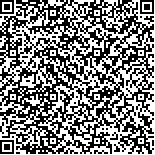| 引用本文: | 朱雨新,李云梅,张玉,王怀警,蔡小兰,成鑫,吕恒.基于遥感反射率的太湖优势藻识别方法.湖泊科学,2023,35(1):73-87. DOI:10.18307/2023.0104 |
| Zhu Yuxin,Li Yunmei,Zhang Yu,Wang Huaijing,Cai Xiaolan,Cheng Xin,Lv Heng.Identification of dominant algae in Lake Taihu based on remote sensing reflectance. J. Lake Sci.2023,35(1):73-87. DOI:10.18307/2023.0104 |
|
| |
|
|
| 本文已被:浏览 1841次 下载 1551次 |

码上扫一扫! |
|
|
| 基于遥感反射率的太湖优势藻识别方法 |
|
朱雨新1, 李云梅1,2, 张玉1, 王怀警1, 蔡小兰1, 成鑫1, 吕恒1,2
|
|
1.南京师范大学虚拟地理环境教育部重点实验室, 南京 210023;2.江苏省地理信息资源开发与利用协同创新中心, 南京 210023
|
|
| 摘要: |
| 我国淡水湖库频发水华,不同类群形成的水华特征、危害及其治理方法差异显著,因此,如何区分不同藻种的遥感反射率特征,获取湖泊优势种信息是一个亟待解决的科学问题。研究基于室内藻种培养实验,培养了富营养化湖泊中的典型蓝藻和绿藻藻种,其中,蓝藻包括铜绿微囊藻(Microcystis aeruginosa)、假鱼腥藻(Pseudanabaena sp.)和束丝藻(Aphanizomenon sp.),绿藻包括小球藻(Chlorella sp.)以及四尾栅藻(Scenedesmus quadricauda);基于实测的遥感反射率,经归一化处理后,分析了不同藻种的遥感反射率特征,构建了DI(difference index)指数以及ADI(algae distinguish index)指数,建立了藻种分类模型,利用验证集数据进行检验,整体识别精度达77.55%,Kappa系数为0.7178。将分类方法应用于太湖野外实测遥感反射率数据集中,结果与实测的生物量数据有较好的匹配;将模型应用于太湖OLCI(ocean and land colour instrument)影像数据,获得了2019年12月和2020年8月太湖冬季和夏季的优势藻种分布,总体而言,太湖蓝藻占比在夏季及冬季均高于绿藻,其中微囊藻显示出较明显的优势,且夏季优势地位明显高于冬季。从季节及空间分布上看,冬季太湖微囊藻主导区域分布在北部及南部湖湾,假鱼腥藻主导区域主要位于湖心,极少部分束丝藻及栅藻零散分布;夏季,太湖大部分水域的优势藻种为微囊藻,假鱼腥藻主导区域分布于湖心及南部,其余3种藻种的主导区域仍只占一小部分并零散分布。优势藻种遥感识别模型的构建可为湖泊水环境遥感监测和水华的预测预防提供技术支持。 |
| 关键词: 太湖 遥感反射率 优势藻种 分类模型 |
| DOI:10.18307/2023.0104 |
| 分类号: |
| 基金项目:国家自然科学基金项目(42071299)、国家自然科学基金云南联合基金重点项目(U2102207)和江苏省林业科技创新与推广项目(LYKJ[2019]32)联合资助。 |
|
| Identification of dominant algae in Lake Taihu based on remote sensing reflectance |
|
Zhu Yuxin1, Li Yunmei1,2, Zhang Yu1, Wang Huaijing1, Cai Xiaolan1, Cheng Xin1, Lv Heng1,2
|
|
1.Key Laboratory of Virtual Geographic Environment of Education Ministry, Nanjing Normal University, Nanjing 210023, P. R. China;2.Jiangsu Center for Collaborative Innovation in Geographical Information Resource Development and Application, Nanjing 210023, P. R. China
|
| Abstract: |
| Algal blooms occur frequently in the freshwater lakes and reservoirs in China, but the characteristics, hazards, and treatment methods of different bloom-forming algae species are significantly different, consequently, a critical scientific problem that must be solved is how to distinguish the reflectance characteristics of different algal species and identify dominant species in lakes using remote sensing reflectance. Based on laboratory algae culture experiments, the research produced typical cyanobacteria species (including Microcystis aeruginosa, Pseudanabaena sp. and Aphanizomenon sp.) and green algae species (including Chlorella sp. and Scenedesmus quadricauda), which are prevalent in eutrophic lakes. Subsequently, the normalized in-situ remote sensing reflectance characteristics of different algal species were analyzed, the DI (difference index) and ADI (algae distinguish index) were constructed based on spectral differences, and then the algal species identification model was established. Validated by independent verification data set, the overall recognition accuracy and Kappa coefficient were 77.55% and 0.7178, respectively. The results of classification algorithm match well with the measured biomass data when applied to the field measured remote sensing reflectance data set of Lake Taihu. Further model tests based on the OLCI images of Lake Taihu in December 2019 and August 2020 show that the proportion of cyanobacteria in Lake Taihu is higher than that of green algae in summer and winter, during which Microcystis displayed obvious advantages and a stronger dominant position in summer than in winter. Furthermore, in terms of seasonal and geographical distributions, the dominant areas of Microcystis were in the northern and southern bays of Lake Taihu in winter, while Pseudoanabaena was in the central area of the lake, and scattered with a tiny fraction of Aphanizomenon and Scenedesmus quadricauda at the same time; compared to summer, Microcystis was dominant in most areas of Lake Taihu, Pseudoanabaena was mainly distributed in the center and south of the lake, and the other three species only scattered in a small part of the lake. The development of a remote sensing identification model of the main algal species can provide technological assistances to remote sensing monitoring of the lake environment, as well as algal bloom prediction and prevention. |
| Key words: Lake Taihu remote sensing reflectance dominant algae species classification model |
|
|
|
|